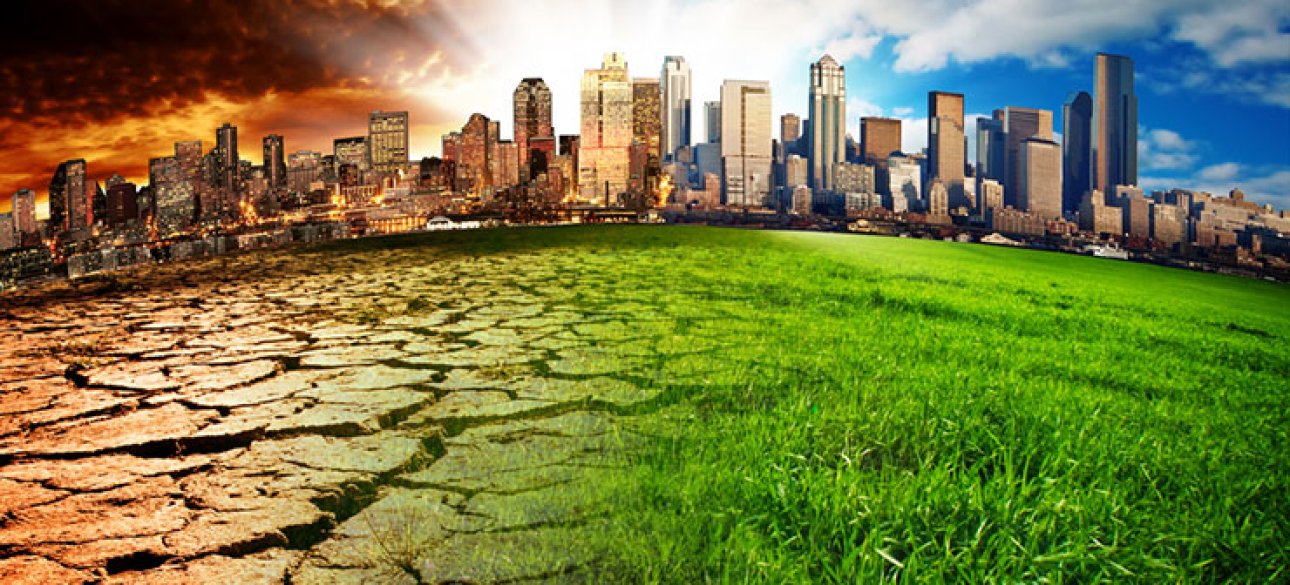
 By Victor Duda
By Victor Duda
In recent decades, all, even those who are not directly interested in global policy, have undoubtedly heard of climatic changes and global warming. However, for many, this issue, especially against the background of tragic events in our country, is not clear. The lack of information available to non -specialists on this issue is another factor in the problem of this problem among the general population.
The fact that greenhouse gas emissions (PGs) that are formed in the process of fossil fuel-coal, oil, gas-the main of which are CO2 (carbon dioxide) cause global warming, became clear in the 1980s. Over the last decades, the international community has implemented a number of agreements and mechanisms aimed at reducing the industrial emissions of PG, such as the UN Framework Convention on Climate Change (RCOONZK) and the Kyoto Protocol.
However, problems with ratification countries with the highest emissions (USA, Russian Federation) and the lack of specific limits for major developing countries (China, India, Brazil) have led to the fact that global emissions not only have not decreased but even more increased , and the pace of global warming has accelerated, which has led to an extraordinary number of catastrophic climatic events around the world.
Then, in 2015, the signatories of the Rcoonzk, gathering at the next conference of the parties in Paris, recognized that a simple reduction of PG emissions would no longer stop rapid global warming, which in the existing trend will be +4 C by the end of this century, so the only way to save humanity is - It is to completely stop the pure emissions of the PG and keep the global temperature at the level not higher than +2 C compared to the pre -industrial era.
Countries that ratified the Paris Climate Agreement (PKU) have pledged to achieve a complete reduction in emissions and climate neutrality by 2050. The term "climatic neutrality" means that the balance of emissions of PG into the air and its absorption will be zero.
More specifically, this implies that most of these emissions will be reduced as much as possible (for example, by rejection of fossil fuels and transition to unruly technologies, such as renewable energy), and the rest of the emissions of PGs, which are technically impossible to get rid of, will be compensated by the technology of absorption of carbon dioxide from the air (for example, by increasing green space or introduction of carbon capture technologies and preservation in the bowels and oceanic depths).
In addition to the direct reduction of emissions, that is, the softening of climate change, the second requirement is the so -called adaptation - that is, the introduction of projects that could withstand negative climatic influences. This includes, for example, the design of buildings, roads, bridges, dams, energy facilities and more.
But the technological component is only part of the plan, because the introduction of these obligations requires large initial costs, backed by regulatory requirements. Different countries have introduced specific complexes of measures to achieve climate neutrality.
In order to fulfill the obligations within the CCU in 2019, the European Union introduced the so -called European Green Course, which is a road map of measures that will turn the European Union into an effective, stable and competitive economy and the world's first climatic continent in 2050. The powerful financial support program for the green transition provided by the European Commission is 1 trillion euro.
With regard to Ukraine directly, it ratified the Rcoonzk and Kyoto Protocol, which implemented a number of projects of joint implementation aimed at improving energy efficiency and reducing PG emissions at various enterprises. The sale of quotas for emissions of PG, obtained through saving emissions, brought to the budget of Ukraine in 2010-2011 UAH 4 billion. In 2015, Ukraine joined the CCU one of the first European countries.
A road card was developed to achieve its obligations, which provided such steps as an increase in the share of renewable energy sources in electricity; the gradual closure of coal mines in combination with the transformation of coal regions and over time - complete rejection of fossil fuels; increase in forest areas; implementation of energy efficiency measures in buildings; transition to electric transport; introduction of stable practices of agriculture and land use; improving the waste management system to reduce methane emissions, etc.
The intermediate goals included 65% of the emissions of PG by 2030 and complete rejection of fossil fuels by 2035, with all energy needs due to 50% by renewable and nuclear power.
Ukraine has begun to adapt its legislation according to the European green course, because the implementation of this process could bring not only direct benefits in the form of mitigating the effects of climate change, but also huge financial revenues, since Ukraine has a huge potential for green energy as for its own needs and exports. In addition, it could access grants and other EU financial support tools.
However, further full -scale military aggression delayed these plans and further intensified negative environmental and climatic influences. Over the 2 years of active fighting, more than 5500 facts of devastating environmental impact have been recorded. Due to daily shelling and their effects, greenhouse gas reached 175 million tonnes of carbon.
Despite all the challenges, Ukraine is ongoing in the environmental field to EU norms and standards, in particular within the framework of the Association Agreement with the EU. 2024 was distinguished by a number of important legislative acts. Thus, in March, the CMU approved the plan of Ukraine necessary for the implementation of the EU initiative "Ukraine Facility" with a volume of 50 billion euros for the period 2024-2027.
These EU funds will be aimed at financing the state budget, stimulating investments, as well as technical support in the implementation of the program. In June, the CMU also approved the National Energy and Climate (NOPP) plan for the period up to 2030. NOPP is a strategic document aimed at coordinating environmental, energy and economic policy for sustainable development of Ukraine.
Finally, in October the Verkhovna Rada of the Verkhovna Rada, a climate law was adopted, which set a more ambitious purpose before Ukraine - to achieve climate neutrality by 2050, instead of previously published plans by 2060. A natural issue that can arise from an average citizen - where we can take funds to implement these plans. Even before the full -scale war, according to the NBU estimates, the investment to achieve Ukraine's climatic goals amounted to $ 102 billion.
At present, this figure, given the additional negative consequences caused by war, even higher. However, it would be more appropriate to ask that Ukraine may lose if in the coming decades it does not move to carbon neutral and persistent climate climate changes. Climate changes and related catastrophic effects in the form of floods, drought, creep, deterioration of air and water, anomalous heat, forest fires, etc.
can have negative impacts on Ukraine that can be compared to destruction caused by long war. This, in particular, can provoke loss of fertile land, decrease in forest area, deficiency of drinking water, excessive air pollution and eventually-an increase in the incidence and mortality of the population. Even before the war, Ukraine has repeatedly suffered from floods in Transcarpathia, forest fires and other natural cataclysms.
In recent years, the increase in arid days of destruction of forests of Ukraine from fires has tripled. Last winter, we watched as an extraordinary force the wind simply destroyed the metal supports of a wind power plant in Odesa region. Thus, climatic changes cause multibillion -dollar losses for all without excluding sectors of the economy, and therefore have a direct impact on the well -being and life of each of us.
The war has increased these influences at times, so the reaction to them should be immediate. It is simply impossible to shielding state borders from climatic disasters. And this is not some apocalyptic scenario, but a likely option to develop events, if humanity does not stop the temperature increase on our planet. That is why we have to welcome the positive shifts that occur in Ukraine in the context of attitude to the softening and adaptation of climate change.
State policy and financing mechanisms should be implemented at all levels, and every Ukrainian enterprise should include an assessment and management of climatic risks in their business model in order to adapt to these changes and remain competitive. And of course, awareness and support of these processes among the general population is an important factor in the success of climate policy, which will allow us to build a green, energy-independent and stable country.










All rights reserved IN-Ukraine.info - 2022